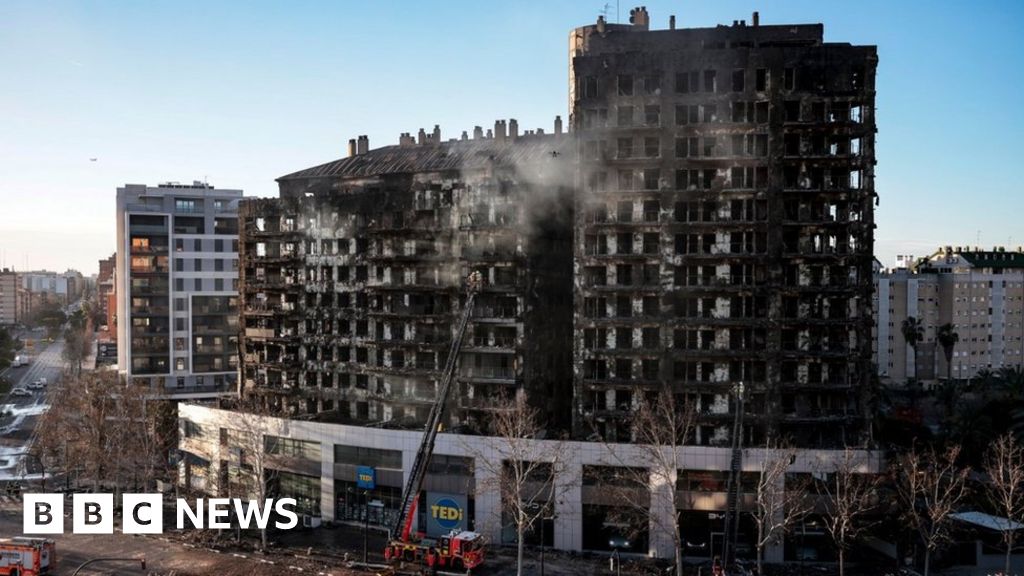Watch: Firefighters in the Spanish city rescued some of the trapped people, but were unable to save others
Spain is reeling from the news of four people dead and up to 15 missing after a fire swept through a high-rise residential building in the city of Valencia.
The fire broke out in a 14-storey building in the Campanar district and spread to the neighboring building.
There are already questions being raised about whether the way the building was constructed enabled the fire to spread so quickly.
Here's what we know so far.
How did the fire start?
The fire broke out on Thursday evening on the fourth floor of the building. The cause of the fire is not yet known.
The fire spread to a nearby building, where strong winds fanned the flames.
Firefighters were able to rescue some of the building's residents last night, but so far they have only been able to reach the third floor, due to high temperatures.
Drones spent the night and this morning flying over and around the building to assist in the search.
A family of four, including a three-year-old boy and a 15-day-old girl, are reported to be among the missing.
Spanish media described it as the worst fire ever recorded in Valencia.
Did the cladding enable the fire to spread?
Experts noted that the building's exterior cladding could have been a factor in enabling the fire to spread quickly.
Cladding is added to the facade of modern buildings to keep weather out. Behind the panels there is usually an air space to help insulate and prevent moisture.
Esther Buchadis, vice president of the College of Industrial Technical Engineers in Valencia, told the Spanish news agency Efe that she had previously inspected the building.
Its exterior is made of polyurethane, which is no longer widely used due to concerns about flammability, she said. It also has an aluminum cover.
“the reason [building] “It burned very quickly because of this type of cladding,” she told Spanish media.
Experts have described the cladding as effective in thermal insulation, but the ventilation or gap between it and the covering means it can be highly flammable.
This could cause a “chimney effect,” allowing fires to spread more quickly, said Luis Sendra, of the Valencia Architects Association.
The specific type of cladding on buildings in Valencia is still unclear, and some types of cladding are more flammable than others.
A 2007 promotional video by the building's developer noted the “innovative materials” used to clad the building's exterior, which had passed “rigorous quality checks.”
What do we know about construction?
These buildings are located in the Campanar neighbourhood, one of the most affluent areas of Spain's third largest city.
About 450 people are believed to live there, according to the Spanish newspaper El Pais.
She added that the building was constructed in 2008 and 2009 and includes 138 apartments.
Developer Fbex began construction on the building in 2005, in the midst of the real estate bubble, but the company declared bankruptcy five years later, elDiario.es reported.
Pilar Bernabe, the government representative in Valencia, said it is difficult to determine the number of missing people because it is “a building that includes many apartments, apartments inhabited by people of foreign nationalities, and it is difficult to determine their exact location.”

“Beer buff. Devoted pop culture scholar. Coffee ninja. Evil zombie fan. Organizer.”




/cdn.vox-cdn.com/uploads/chorus_asset/file/25550621/voultar_snes2.jpg)


More Stories
Two children killed, 11 injured in stabbing attack at Taylor Swift dance party in UK, 17-year-old arrested
Fiber optic communications networks are being sabotaged – DW – 07/29/2024
Putin warns US against deploying long-range missiles in Germany | NATO